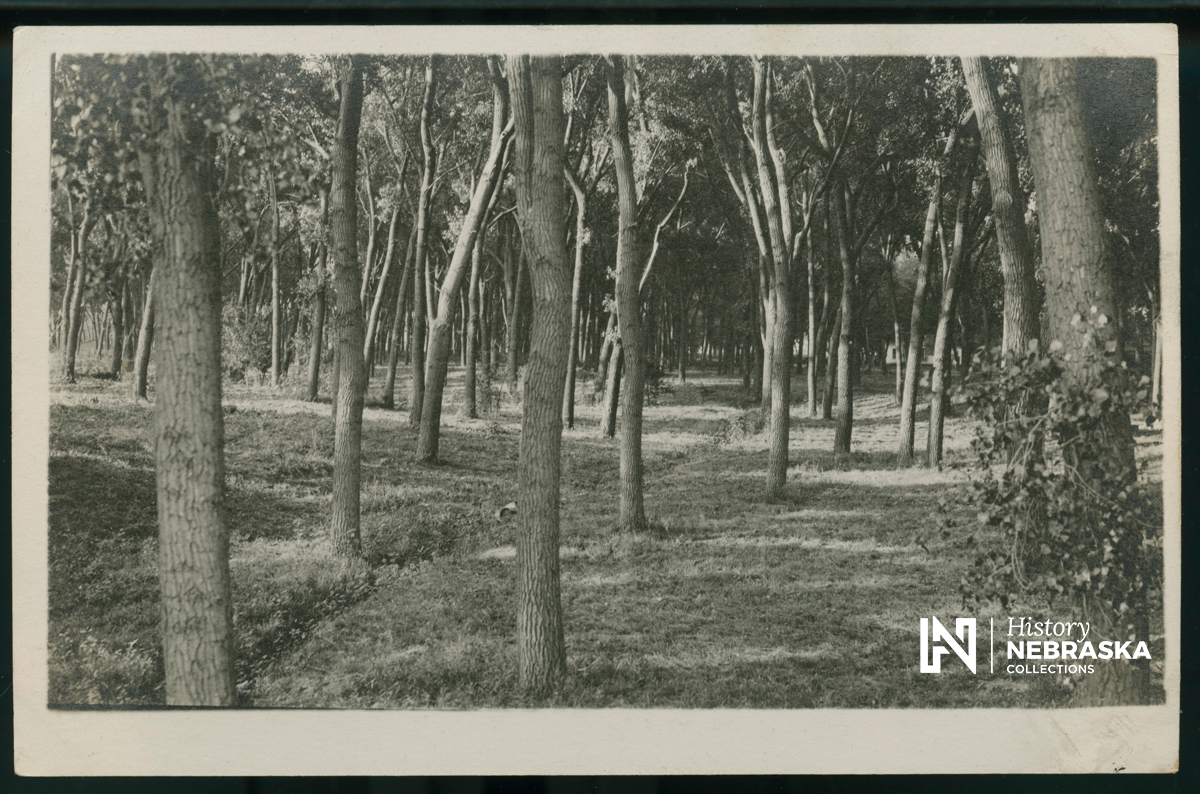The Timber Culture Act of 1873 was one of many land laws affecting Nebraska in the state’s early days. It was also one of the most abused and least successful land laws of the day.

Of the many land laws affecting Nebraska, the Timber Culture Act of 1873, designed to promote tree planting, was the least successful and subject to much abuse. The law allowed for an individual to make a timber claim on no more than 160 acres of land. It did not require claimants to live on the land, but it did require that forty acres of it were set aside for trees.
When US Senator Phineas W. Hitchcock of Nebraska first wrote it, a timber claim could be made by anyone. In 1874 the language was updated to require claimants to meet the same age and citizenship requirements as the Homestead Act. Later amendments to the law made it possible for the 160 acre total to be claimed in several smaller tracts.
The original requirement of forty acres of trees per 160 acres claimed was later softened to ten, with some specific guidelines introduced for good measure.
When the claim was made, an initial five acres were to be plowed in the first year. In the second, that plowed acreage needed to be cultivated in preparation for tree planting and another five acres plowed. In the third year, the initial five acres was to be planted with trees and the second five cultivated. By the fourth year, trees needed to be planted on the second five acres, making a total of ten planted acres. With no less than 2700 trees per acre required, that makes a total of 27,000 trees! Failure to comply with that procedure made the claim subject to cancellation, with exceptions or extensions allowed in the event of grasshopper devastation or the failure of seeds and cuttings to germinate.
At the end of eight years from the date of entry, the claimant could make final proof showing that the necessary conditions had been fulfilled. Five additional years were allowed to make the proof. The claimant had to prove that the trees had been planted and cultivated and that no less than 675 living trees per acre had survived. An affidavit or “timber culture proof” had to be completed by the claimant and two witnesses before the final certificate and patents were issued.
Historian Everett Dick noted in Conquering the Great American Desert: Nebraska, published by History Nebraska in 1975, that the timber claim offered homesteaders an opportunity to secure another quarter section of land. But the planting and cultivation of trees were sometimes done in such a haphazard way that there was little or no chance that the trees would grow to maturity. Although millions of trees were set out in an attempt to qualify for land under the Timber Culture Act, very few groves actually grew. In Nebraska, 8,876,351 acres were entered as tree claims, but final proof was made on only 2,456,696 acres.
The Timber Culture Act was repealed in March 1891, just 18 years after it was enacted.



